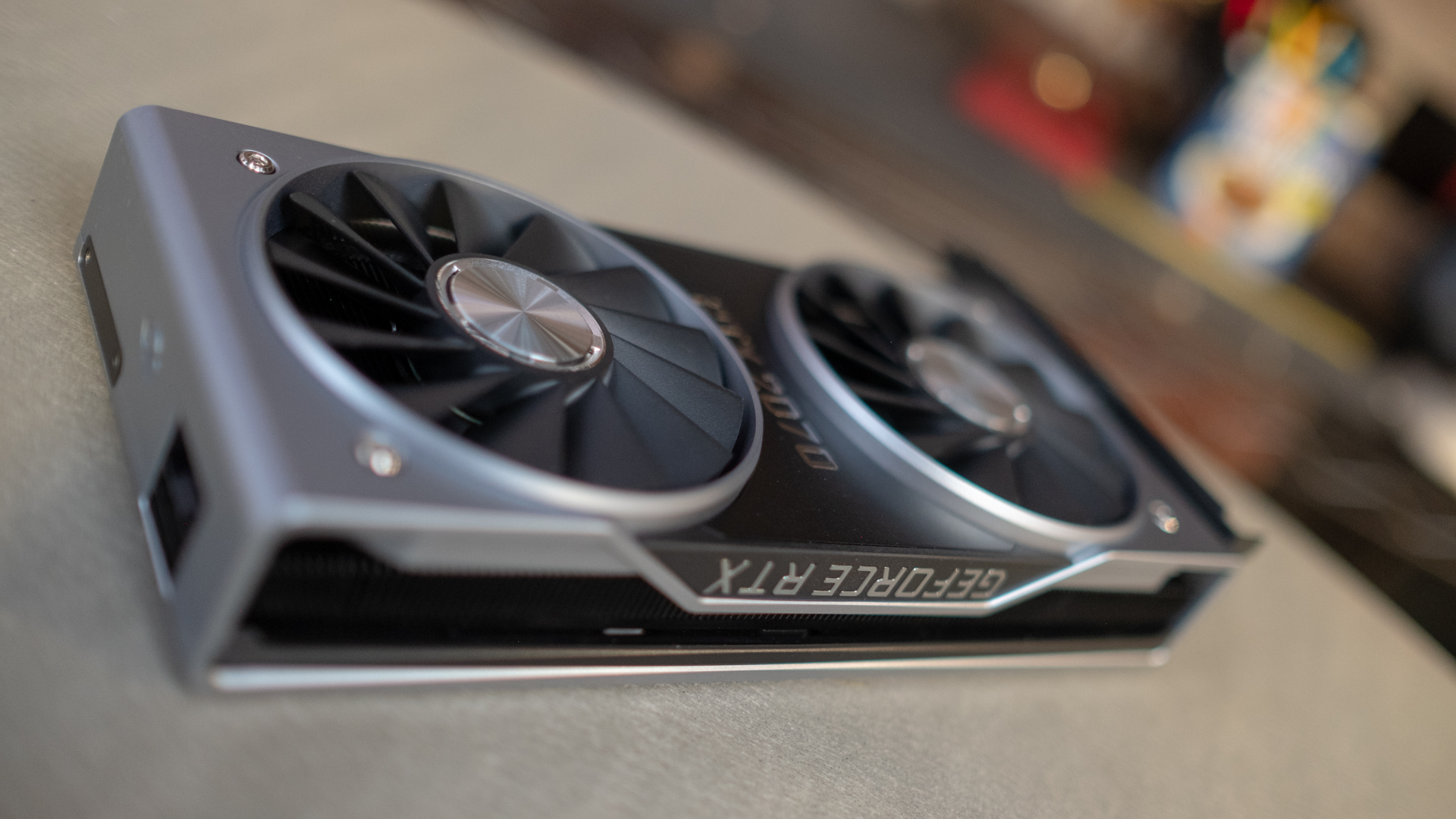Nvidia talks up Turing graphics cards as outselling Pascal by 45% in revenue
Comparing sales figures for the first eight weeks post-launch

At Nvidia’s investor day, the company revealed fresh statistics which show that its new Turing graphics cards outsold the previous generation (Pascal) by a lofty 45% in terms of revenue on desktop PCs.
This is the case when comparing the first eight weeks of sales of the respective GPUs, according to the graphics card maker.
Now wait a minute, you might be thinking. Just after Turing launched, didn’t Nvidia come out and admit that sales of these GPUs were disappointing, just before it revealed a set of poor fiscal results?
Yes, it did, but there’s a bit more to the overall picture than that – let’s dig into this a little more deeply.
- These are the best processors for your PC
- PNY’s GeForce GTX 1660 Ti gets a huge five-star thumbs up
- Nvidia vs AMD: which should be your next graphics card?
So, the numbers and graphs Nvidia just shared indicate (among other things) that in the first eight weeks of Pascal (10-series) versus Turing sales revenue, the latter did 45% better as mentioned, when it comes to $299+ GPUs. In that post-launch period for Turing, the RTX 2080 Ti, RTX 2080 and RTX 2070 were on sale (and not the RTX 2060, which didn’t follow until the start of 2019).
Now, back in January when Nvidia admitted that its gaming revenue was going to be sub-par for fiscal Q4, the firm said that “certain high-end GPUs” from the Turing range hadn’t sold as well as expected.
So given that, we can safely assume that the RTX 2080 Ti underperformed, and presumably also to some extent, the RTX 2080 – given that multiple ‘GPUs’ are mentioned, and it’s not unfair to call the RTX 2080 high-end considering that it weighs in at a retail price of $799 (£749, AU$1,199) for the Founders Edition (a hundred bucks less for other models). Which is more like what the average consumer will look to spend on an entire PC, not just a graphics card.
Sign up for breaking news, reviews, opinion, top tech deals, and more.
Yes, this is all theorizing, but it would seem to us that the new figures point to the RTX 2070 doing rather well, considering the previous comments about disappointment from the high-end Turing GPUs – and the fact that the RTX cards have apparently outsold Pascal by 45%.
Revenue not shipments
But before we get carried away with the concept of the RTX 2070 notching up some comparatively mammoth sales, we have to also bear in mind that Nvidia is highlighting a difference in revenue here – not the units sold.
And of course, Turing cards were pitched at a much higher price than Pascal efforts, with Nvidia’s Founders Edition RTX 2070 hitting an eye-watering $599 (£569, AU$899) compared to $399 (£379, AU$699) for the GTX 1070.
So the Turing GPU saw a roughly 50% price hike, and although you can get third-party cards for cheaper, of course, prices vary – but they will still probably be roughly in line with this.
The upshot is that we would expect around a 45% increase in revenue from Turing models compared to Pascal, if they sold around the same number of units. In short, there’s been no big jump in shipment numbers, just profits.
Which is still good news for Nvidia, and its investors, naturally enough. And that’s doubtless part of what this is: an effort to restore investor confidence given the recent gloomy earnings report which saw overall revenue drop to its lowest level in almost two years.
It’s also true that even if Turing has ‘only’ matched Pascal in terms of actual shipment numbers, as we are guessing here, that’s still a good performance given the asking prices of the new cards.
The company also revealed some other interesting statistics on its Turing GPUs, including the fact that 90% of folks who own Nvidia graphics cards have a model which is less powerful than the new GTX 1660 Ti.
50% of Nvidia owners are running a Pascal card, and only 2% have bought a Turing GPU, with the remaining 48% having an older model than Pascal. That would seemingly point to a slower start for Turing, though adoption takes time – especially at RTX prices, so again this is no real surprise.
What Nvidia wants it to point to, though, is the fact that there are a lot of folks out there who will be ready to upgrade to the more affordable non-ray tracing Turing models like the GTX 1660 Ti – and therefore that much bigger sales numbers are in the pipeline.
And it’s difficult to argue with that, and the value proposition of these Turing GTX cards, one of which we recently labelled as the best entry-level graphics card going.
You can seemingly brace yourself for further Nvidia domination, then, at least in the near-term, with AMD’s new Navi graphics cards not expected to emerge until later this year – and with recent figures from an analyst firm showing Team Green having notched up its GPU market share to 81.2%, from 74.3% the previous quarter.
- These are the best graphics cards of 2019
Via Wccftech
Darren is a freelancer writing news and features for TechRadar (and occasionally T3) across a broad range of computing topics including CPUs, GPUs, various other hardware, VPNs, antivirus and more. He has written about tech for the best part of three decades, and writes books in his spare time (his debut novel - 'I Know What You Did Last Supper' - was published by Hachette UK in 2013).